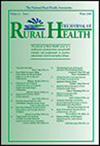Travel burden and bypassing closest site for surgical cancer treatment for urban and rural oncology patients
Abstract
Purpose
We examined the relationship between travel burden for surgical cancer care and rurality, geographic bypass of the nearest surgical facility, cancer type, and mortality outcomes.
Methods
Using Medicare claims and enrollment data (2016–2018) from beneficiaries with cancer of the colon, rectum, lung, or pancreas, we measured travel times to: the nearest surgical facility and facility used. For those who bypassed the nearest, we examined travel time and rurality in relation to surgical rates. Using multivariable regression modeling, we estimated associations of bypass with 90-day postoperative- and one-year mortality; rurality was examined as an effect modifier.
Findings
Among 211,025 beneficiaries with cancer, 25.5% resided in non-metropolitan areas. About 66% of metropolitan/micropolitan, and 78% of small town/rural patients bypassed their closest facility. Increasing rurality was significantly associated with increased likelihood of bypass (Referent = metropolitan, OR; 95%CI: micropolitan 1.10; 1.04–1.16, small town/rural 2.08; 1.96–2.20. Bypassing the nearest facility was associated with decreased likelihood of both 90-day postoperative mortality (OR = 0.79; 95%CI 0.74–0.85) and 1-year mortality (OR = 0.81; 95%CI 0.77–0.86). The greatest decrement in 1-year mortality was for pancreatic cancer across all rural-urban categories (OR; 95%CI: metropolitan 0.63; 0.53–0.76; micropolitan 0.53; 0.29–0.97); small town/rural 0.46; 0.25–0.86).
Conclusions
Most Medicare beneficiaries with lung, colon, rectal, or pancreatic cancer bypassed the closest facility providing surgical cancer care, especially rural patients. Bypassing was associated with a lower likelihood of 90-day postoperative, and 1-year mortality. Understanding determinants of bypassing, particularly among rural patients, may reveal potential mechanisms to improve cancer outcomes and reduce rural cancer disparities.


 求助内容:
求助内容: 应助结果提醒方式:
应助结果提醒方式:


